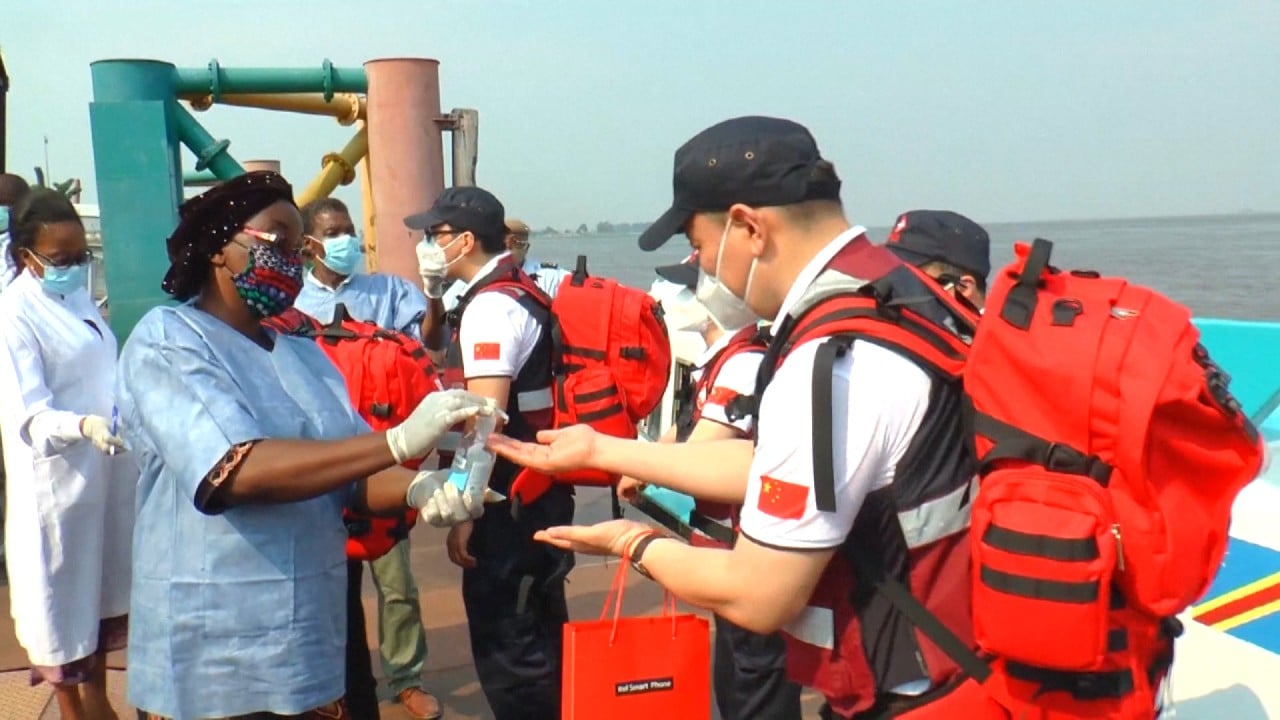
African railways feel pinch of China’s belt and road funding squeeze
- Ambitious rail project from Kenyan coast to landlocked countries in the Great Lakes region stalled
- Analysts say Chinese policy banks are taking a more cautious approach to lending in current economic climate
More than six years ago, Kenya, Uganda, South Sudan and Rwanda hatched a grand plan to build an ambitious standard gauge railway line linking their countries from the Kenyan coast and eventually stretching to the mineral-rich Democratic Republic of Congo.
Kenya has yet to secure funding for the phase linking the railway to Kisumu and on to the Malaba border crossing with Uganda, where construction is then supposed to continue into it and other landlocked countries in the Great Lakes region.
A new way for the highway as Africa struggles with Chinese debt
The Exim Bank, one of China’s top lenders for overseas projects, has asked Kenya to redo a feasibility study for the Malaba extension to prove its commercial viability before funds are released. Uganda too is yet to secure funding from the same bank, with officials in Kampala saying negotiations are ongoing.
Tim Zajontz, a research fellow in the African Governance and Space project at the University of Edinburgh, said there had been a decline in funding, especially from Chinese policy banks, as a result of stricter risk assessments.
“We are currently witnessing an incremental shift in the financial governance of the Belt and Road Initiative. The main reason for this shift is the waning debt sustainability of several key participant countries – such as Kenya, Djibouti, Ethiopia, and Sri Lanka – and the questionable economic viability of some flagship projects,” he said.
Kenya’s new standard gauge railway incurred a loss of US$200 million between May 2017 and May 2020. At the same time, the Kenyan government was contractually obliged to pay almost US$30 million every quarter in fees to Chinese-owned Afristar for the operation of the railway.
How China can tighten its Belt and Road Initiative in Central Asia
The situation is similar in Ethiopia where its new electrified standard gauge railway (SGR) reported US$40 million in revenues in 2019, while operating costs were US$70 million.
“As grace periods of the loans for these projects have come to an end, debt servicing costs have kicked in and eaten up significant shares of public budgets,” Zajontz said.
“In the Kenyan case again, debt servicing costs for the SGR amounted to almost US$900 million in 2020, even though some of the repayments are currently postponed as part of the G20 Debt Service Suspension Initiative.”

02:09
Kenya opens massive US$1.5 billion railway project funded and built by China
Zajontz said for a long time the lending of institutions such as Exim Bank had been very supply driven.
“What we are increasingly witnessing now is that not all of the funding was based on comprehensive and independent project appraisals and feasibility studies. In the case of the Kenyan SGR, there were actually, several independent studies and reports that clearly indicated that the construction of a standard gauge railway on a new rail track would not be economically viable,” he said.
Yang Tingzhi, a Beijing-based researcher on China-Africa relations, said while the belt and road plan was a global project, most of its activity was aimed at Asia, particularly Southeast Asia.
“When the Belt and Road Initiative came along, most cooperation activities that China had done with Africa over the years were brought into belt and road cooperation,” he said.
Belt and Road Initiative: Chinese workers leave Africa as lending slows
When it came to loans from China, it had never been the case that “more is always better”, Yang said. “Most of China’s loans are project-based and are evaluated on their own merits. Each country’s ability to handle debt is different, and we have to look at each country’s own ability separately.”
Nevertheless, the current headwinds do not mean China is abandoning the belt and road plan. Beijing is still signing more deals.
For example, on Wednesday China’s National Reform and Development Commission announced the first belt and road cooperation agreement to be signed with a regional international organisation – the African Union.

02:39
China dispatches experts, medical supplies to African nations battling coronavirus
Yun Sun, director of the China programme at the Stimson Centre in Washington, said the slowdown in financing did not suggest the belt and road strategy had been abandoned, nor that Chinese financing would not climb in the future.
“This is reflected in the redefinition of belt and road from ‘impressionist’ during the first Belt and Road Initiative Forum in 2017 to ‘perfectionist’ at the second one in 2019,” she said.
“During the first stage, the Chinese were trying to create the Belt and Road Initiative as a grand scheme and many things were counted as belt and road to enrich the initiative. But in the past two to three years, Chinese financing has become more cautious and calculating,” she said.
Claims of China’s debt-trap diplomacy fail under scrutiny
Linda Calabrese, a research fellow and development economist at the Overseas Development Institute in London, attributed the financing drop to two factors: Chinese policy banks learning how to deal with operating internationally, but also learning that China’s international image did not benefit from debt default in borrowing countries.
She predicted that funding for belt and road projects in low and middle income countries would continue in the short term.
“It may be scaled down, or it may become more prudent, but since the drivers of the Belt and Road Initiative persist, in the short term we are not likely to see dramatic changes,” she said.


